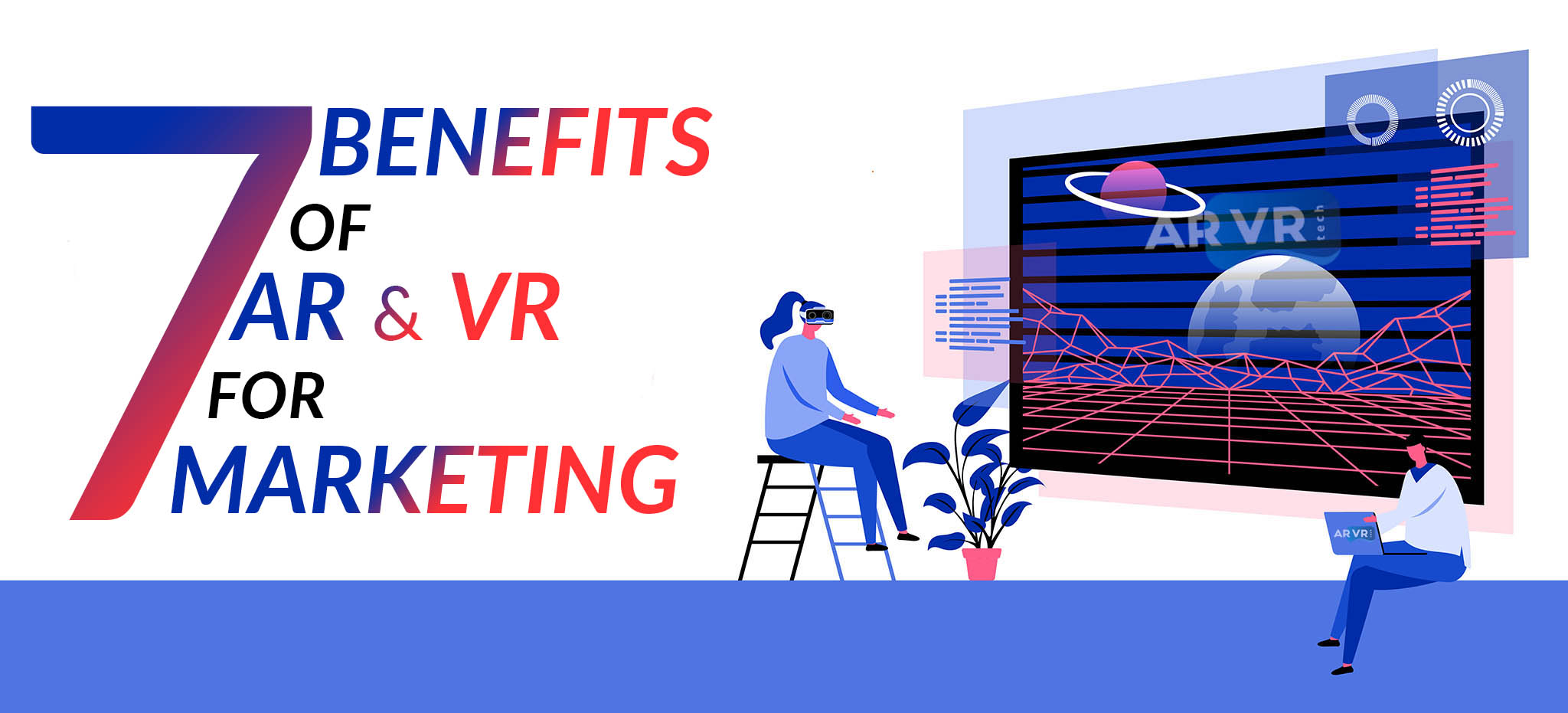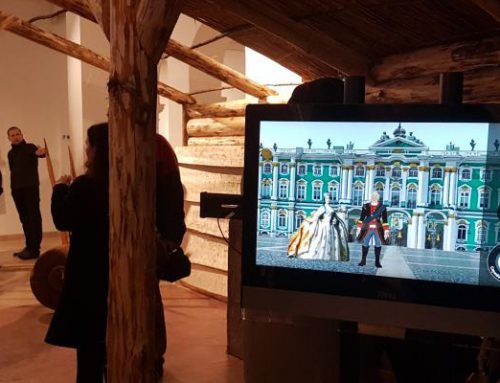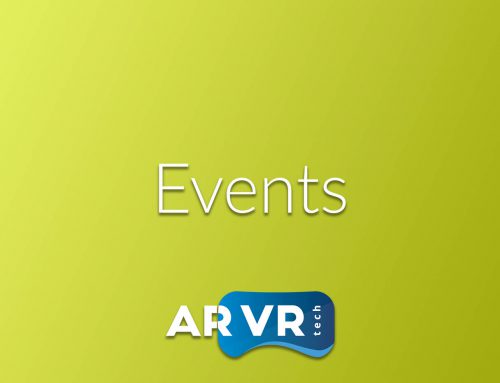
UPDATE: WE HAVE A BRAND NEW POST ON THIS SUBJECT! HERE ARE THE 5 WAYS YOUR MARKETING WILL BENEFIT BY USING AUGMENTED AND VIRTUAL REALITY!
VIRTUAL AND AUGMENTED REALITY ARE THE NEW TECH HIGHWAYS THAT BUSINESSES SHOULD PURSUE IN THEIR MARKETING
Consumers are becoming more and more sophisticated and companies should think in an innovative manner not only how to engage them, but also how to surpass their expectations. Below are top benefits that augmented and virtual reality can bring to your business, especially in the field of marketing, in case you decide to implement it.
1. VR AND AR CREATE RICH, IMMERSIVE AND INTERACTIVE USER EXPERIENCE
Marketers have been saying ,‘‘Content is the king’’ until quite recently, but now with VR and AR the users become both content consumers and content creators.
With a personalized headset and VR solutions, VR enthusiasts can travel to the place of their dreams, attend their favourite sport game or experience certain emotions in their body, mind and soul as if those events are happening not only in front of them, but also to them.
Similarly, augmented reality enables users to give a personal touch to the published or online content that they ‘‘augment’’ with the little help of customized smart phone apps and the markers which provide extra information.
For example, in the supermarket consumers learn as they screen with AR apps what prices are on sale; they may also get additional data about houses in their neighbourhood which they want to buy or rent and they test their knowledge about brands as they play the treasure hunt games.
2. PERSONALIZED CONTENT IS TAILORED TO USER’S PARTICULAR NEEDS AND ADOPTED FAST
We are adopting technology faster and faster. For instance, the telephone reached 50% of US households in several decades, beginning before 1900, whereas the cell phones achieved the 40% penetration rate in just 10 years.
It is estimated that virtual and augmented reality will cause the disruption in business models as they are the fourth major platform shift after PC, web and mobile devices.
The main benefit of VR and AR would be that it creates such value through personalized content and new business models.
CEOs and marketers who make decisions in the companies will learn through time how to use these technologies to the best advantage of their businesses. Digi-capital has identified that 80% of AR/VR revenue by 2020 will come from AR/VR hardware sales, eCommerce sales, adspend and mobile data/voice. If we translate these revenues into numbers VR would amount to $30B and AR to $90B, whereas $120B would be for AR/VR revenue combined by 2020.
3. AR AND VR ALLOW READERS TO TRULY CONNECT WITH THE PUBLISHED CONTENT
In the world of publishing, the prints will not disappear, they just evolve thanks to VR and AR, creating a new storytelling medium and revenue stream. At the moment The Wall Street Journal and InStyle are several of many brands that intend to integrate VR.
The New York Times created a VR mobile app that tells stories in “immersive, 360-degree video experience.” In the VR film The Displaced they portrayed refugee children and sent 1.2 million Google Cardboard units. The unique storytelling and advanced technology built huge anticipation and empathy during the launch.
Although skeptics may emphasize that the major barrier to a wider adoption of virtual reality is that users need to have a gear and that big brands such as NYT had to send thousands of Google Cardboard pieces to get their app downloaded, it is just a matter of time when users will buy themselves headsets in order to access customized and captivating content, in the same way as smart phones became one of top gadgets.
Augmented reality in publishing has similar advantages over virtual reality as in other industries: no wearables are required to adopt, on smart phones all the content can be accessed, and the otherwise motionless content becomes live and boosted with extra information. If you scan brochures and catalogues with an AR app you may make a purchase and view styling tips.
Disney created an augmented reality app that projects characters from the colouring book while you are still working on them. Our company made the white label of Red Ridding Hood as we brought to life fairy tales for a showcase.
4. VIRTUAL AND AUGMENTED REALITY CAN REDUCE LANGUAGE BARRIERS
For example, Theatre in Paris together with Atos and the French start-up Optinvent created the augmented reality solution where theatre-goers were able to see subtitles simultaneously with the theatre show. This intersection of cultural events and technology is expected to spill over to other entertainment industries such as sport games or concerts, making them accessible to those who do not speak the language.
All the communication technology we had so far, from telegraph to the internet was an attempt to replicate the fundamental human interaction: connecting face-to-face.
Nowadays we substitute the lack of face-to-face interaction on the internet with many options (videos, photos, memes, gifs, texts) to create this wish-you-were–here effect.
Therefore, augmented and virtual reality may remove this last frontier of missing the physical contact with other person. What if the Google translate on steroids in the future become AR apps with advanced markers that translate simultaneously people’s conversations. Imagine people who are able to share a location, visit their dream destination and even understand each other in foreign languages thanks to VR.
5. BRAND AWARENESS GETS INCREASED VIA SOCIAL SHARES
At the back of the mind of marketers many emotions take place. Sometimes there is even a slight fear that their brand message will get ignored. ‘‘To which extent are people aware of our brand?’’ is one of the questions marketers keep asking themselves.
Virtual and augmented reality are the new channels for increasing brand awareness because they have the personalized characteristics of social media, yet people can experience content on a deeper level, from the first-person perspective.
Coca-Cola in Poland promoted the spirits of Christmas with the Oculus Rift as they users could become Santa Claus for a day. These new technologies are beneficial even for celebrity brands such as Michelle Obama or Sir Paul McCartney. The 360-video about healthy routine that the Verge created with Michelle Obama was identified as one of the best explainer videos marketers can learn from. Fans of Paul McCartney could experience being with him on the stage at Candlestick Park thanks to 360 video that Jaunt produced.
Even new brands can get ahead strong if they harness the power of AR and VR. When VR and AR apps make it possible and effortless for people to extra share their experience on social networks even more buzz is out there and friends-of-friends get interested in trying out the same.
Therefore, although virtual and augmented reality have not become mainstream in marketing labs world-wide, very soon these solutions will get their part of the marketing budget. They will appear with social media, the most cost-effective marketing tools when it comes to profiling target groups and providing to them exactly what they want.
6. AR AND VR HELP IN CUSTOMER BUYING DECISIONS
As consumers interact with AR and VR solutions, marketers can measure this engagement and activate certain metrics over the other ones.
Parents interacted longer with the ad for children construction toy when it was presented to them in the format of AR (83 seconds vs. 12 seconds of traditional marketing). Because such solutions are tried out longer as the purchase decision tool, the likelihood that the item would be bought increases.
The ultimate purpose of any business is making sales. The ultimate purpose of any efficient and scalable business is to make sales to the satisfied customers who will come back again and again. Once potential users have been wowed by the immersive and interactive experience of VR and AR, their expectations from brands have increased. Brands that use these technologies creatively will set a new standard of surprise and appear in eyes of their consumers as the first choice.
7. DETAILED ANALYTICS IS GENERATED FOR UNDERSTANDING USER BEHAVIOR
How people make decisions and behave has been a source of intrigue for ages. Plato said, ‘‘Human behavior flows from three main sources: desire, emotion, and knowledge.’’ When these three ingredients get mixed up successfully in marketing, the winning combination is created.
Because augmented and virtual reality solutions integrate analytics of the web and social media, one foundation for understanding user behavior has been already set up. In terms of consumer decision journey, by 2016 the web will influence more than half of all retail transactions, which equals to potential sales of almost $2 trillion.
Moreover, because AR and VR are so intuitive they integrate additional metrics that help us with user behavior. Consumers continue to immigrate to web and mobile channels with 65% of adults being active on social media according to Pew Research Center.
The numbers make it crowded for both marketers and consumers: Facebook and Instagram alone have 1 billion and 400 million users, Snapchat had around 100 million daily active users during the middle of 2015 and the micro-blogging network Twitter had 320 million users.
According to Marketing Dive’s top ten digital marketing trends in 2016 AR content will disseminate more easily than VR because it does not require the headset, but it ‘‘will start to mimic the functionality we see in virtual reality arena.’’
Yahoo’s VP of content strategy and solutions Andrew Snyder claims that it is crucial that ‘‘an ad experience can connect across devices’’. Certainly, brands that want to create the content that converts on AR and VR platforms would need to pay attention that their videos are engaging, compact, and functional across devices.


